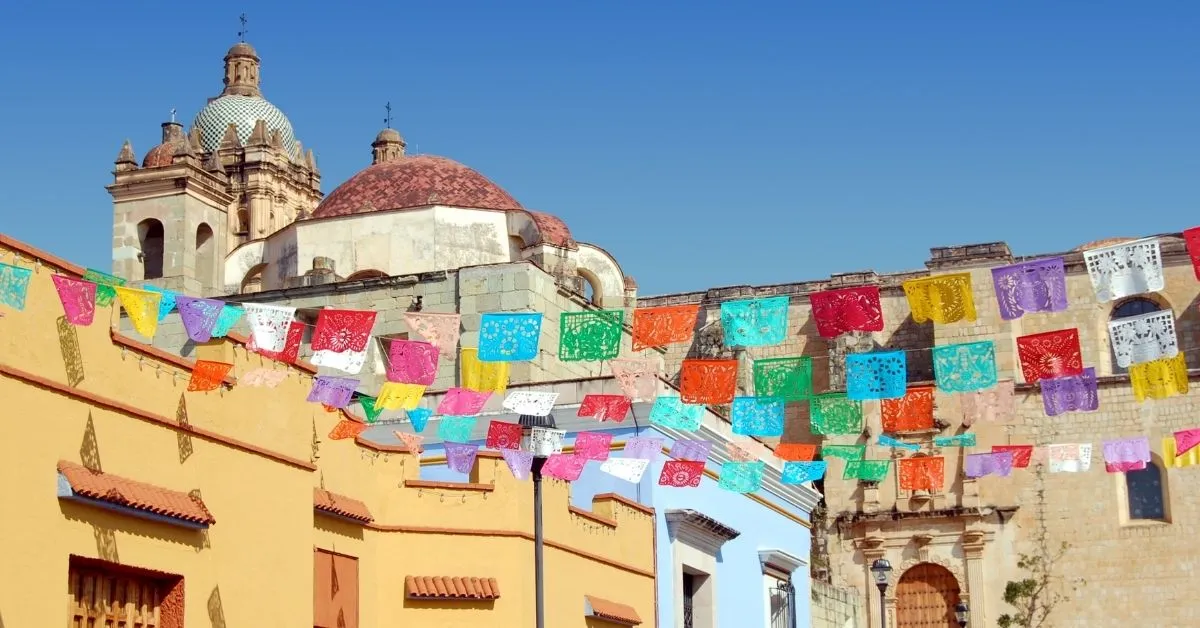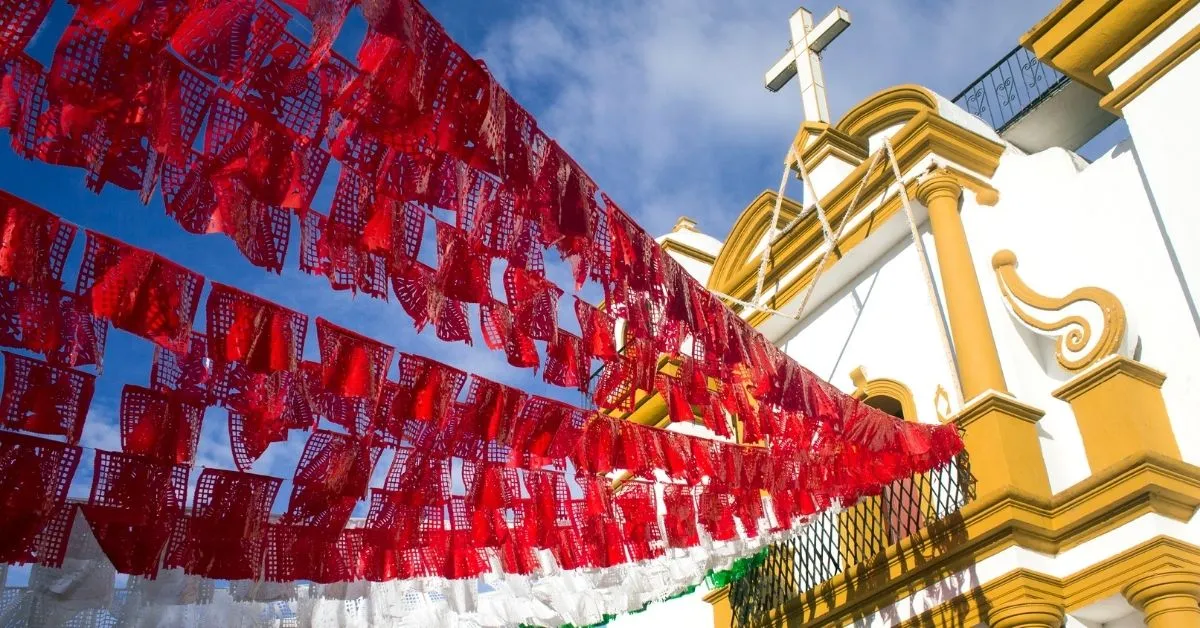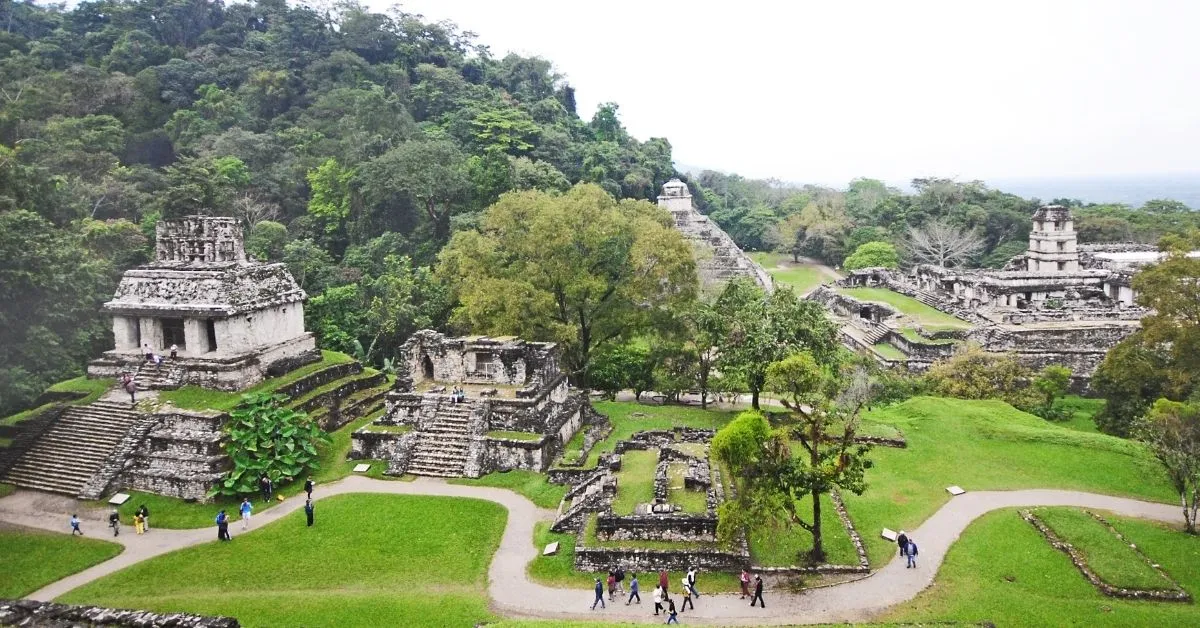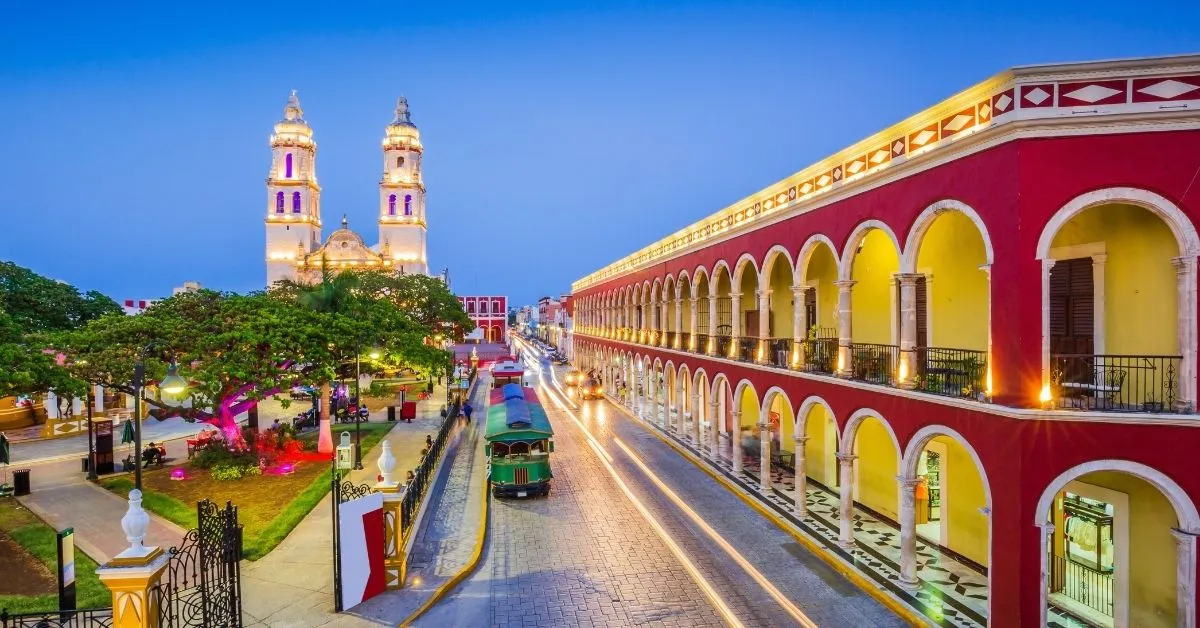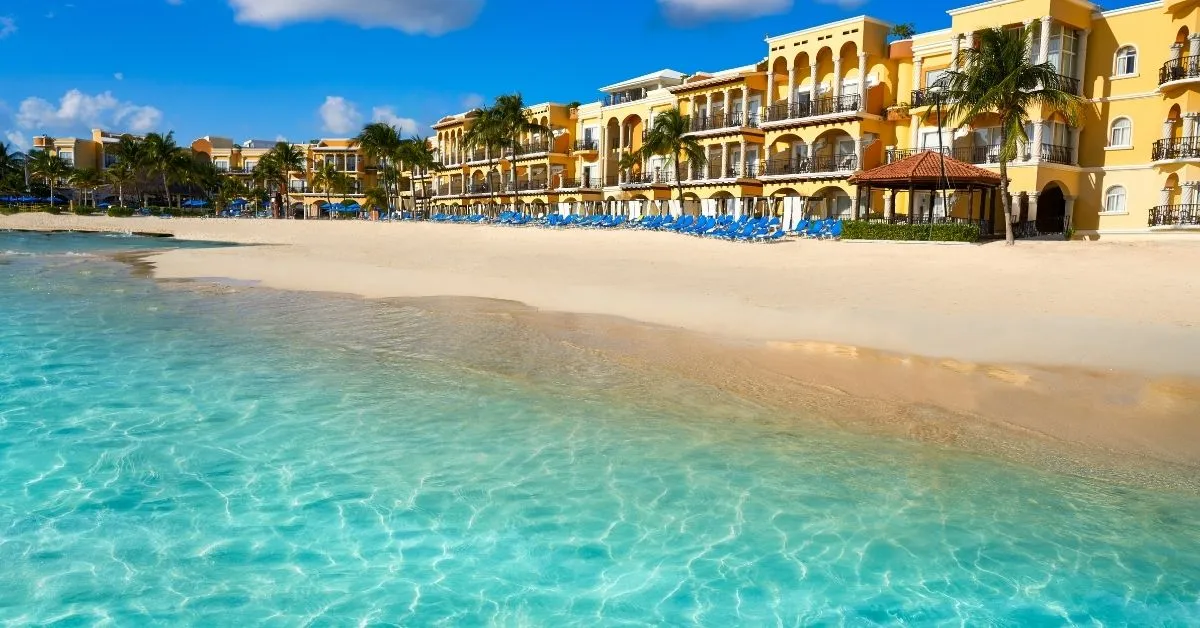Mexico is fast becoming one of the most popular countries for a backpacking trip, and it’s clear to see why.
From ancient Mayan ruins to intriguing cenotes to lush jungle, Mexico offers a diverse and exciting array of scenery to explore.
Ready To Travel? Don't Go Without Travel Insurance.
I recommend SafetyWing Nomad Insurance, an affordable travel insurance offering automatic monthly payments that you can cancel anytime. I've been using it since 2019, and I can assure you it's the perfect solution for nomads like you and me. Learn more by reading our SafetyWing review.What’s more, with cheap food and accommodation to be found throughout the country, backpacking Mexico won’t make you go broke.
In this Mexico backpacking guide, you’ll find a suggested itinerary, budget travel tips, and more!
Mexico Backpacking Route
For many travelers, one of the most exciting parts of a trip is planning it.
To create the best Mexico backpacking route, you’ll need to do some research to find out the must-see places in the country.
Specific towns and cities in Mexico are more popular with backpackers, and there are places you may want to avoid too!
Here are the destinations you should add to your backpacking Mexico itinerary.
1. Mexico City
Mexico City is home to the largest and busiest international airport in the country.
Therefore, naturally, Mexico city is the most common starting part for your Backpacking Mexico route and a fantastic place to get your bearings and start your adventure.
There’s so much to do here, so I recommend staying for at least a few days before jetting off to the coast.
Food, transport, and accommodation are all very cheap in Mexico. You can enjoy several free activities here too, such as exploring the city’s parks and visiting the National Palace.
Chapultepec is the largest park in the whole of Latin America, spanning 1,600 acres. The grounds feature multiple lakes, fountains, museums, a botanical garden, and even a castle!
There are also some fantastic day trips you can take from Mexico City. To learn more about the country’s history, I recommend visiting the archaeological complex, Teotihuacán, a one-hour drive from Mexico City.
Xochimilco is another area that is well worth checking out. This ‘Venice style’ neighborhood 40 minutes south of Mexico City is full of canals and features and an impressive water transport system built by the Aztecs.
Here, you can cruise through the floating markets on a colorful gondola.
You can book group tours to both of these places, or if you want to save money, you can arrange your own way there and back with a group of travel buddies.
2. Oaxaca
From Mexico City, many backpackers begin to make their way down to the coastal regions of Yucatan and Quintana Roo.
However, rather than flying straight there, you’ll find much more adventure in taking the bus and stopping off at some incredible places along the way, the first stop being Oaxaca.
This beautiful city is full of brightly colored colonial buildings. It is potentially even cheaper than Mexico city, so spending a few days here makes sense.
Oaxaca downtown is actually a UNESCO World Heritage Site with an abundance of stunning Colonial architecture, traditional markets, and museums.
Oaxaca is also renowned for its food, and there’s no shortage of places to eat here. From street carts to markets to the restaurants and cafes on Macedonia Alcala Street, you’ll need to stay a few days just to taste all the city’s delights.
As you do, be sure to try the ‘Tlayudas,’ like a Mexican pizza, ‘Nieves,’ a cross between ice cream and sorbet, and the distinct mole sauce.
One must-see place in Oaxaca is Monte Alban, an expansive pre-Columbian archaeological site. It features two pyramids that you can climb to the top of and admire the view of the complex.
Hierve el Agua, 45 minutes from Oaxaca city, makes another incredible addition to your trip.
This beautiful area features thermal pools you can bathe in and calcified (frozen) waterfalls that make for some very Instagram-worthy photos.
3. San Cristobal
In the Chiapas region, San Cristobal is a must-visit. Like Oaxaca, this city is full of centuries-old colonial architecture, such as the iconic yellow cathedral.
However, one of the best things to do here is wandering around the vast Artisan market that sells colorful textiles, jewelry, gemstones, and other handicrafts.
Plus, close by is a great food market where you can refuel after all that shopping.
Located two hours from San Cristobal is Canyon de Sumidero. This deep natural canyon is set within a national park. It is home to several endangered species like river crocodiles and spider monkeys.
You can hike around it and take a boat trip down the river to see the tall canyon walls up close.
4. Palenque
From San Cristobal, you can start to make your way toward Yucatan.
However, it’s a long trip, so you might consider breaking up the journey. Palenque is an expansive historical site with ruins dating back to 799 AD and is an ideal place to stopover.
Palenque features temples, waterfalls, and a pyramid and has an ‘in the jungle’ vibe.
To make the most of this natural environment, we recommend staying in one of the forest hostel hideouts along the road between the town and the ruins.
5. Campeche
An alternative stopover on the way to Yucatan is the lesser-known port city, Campeche. This ancient city is another World Heritage Site and is one of the safest cities in Mexico.
n my opinion, Campeche is a fantastic city to spend a day or two before visiting the tourist parts of the state. Moreover, Campeche gives you the chance to explore ancient Mayan ruins without the crowds.
You’re bound to have one of your most authentic Mexican experiences in Campeche, especially if you are there for the weekend. Every Friday night, the city throws an unofficial outdoor salsa party on Calle 59.
Here tourists and locals join to listen to local bands and dance the night away.
6. Merida
Upon arriving in Yucatan, your first stop should be Merida. This vibrant city has a rich heritage, and there is always so much going on here.
As Merida is a cultural hub, you’ll see many Mayan cultural performances on the streets, in the plazas, and in theatres, all for no cost.
Merida also offers two free walking tours every day, one in the morning and one in the evening. This is a great way to learn more about the city.
If you don’t want to join the tour, you create your own by exploring the city’s plazas and parks. Plaza Grande is the busiest part of the city and is ideal for ‘people watching.’
Another advantage of stopping off in Merida is visiting one of the 7 New World Wonders, Chichen Itza. However, it’s a two-hour journey, and I would recommend staying overnight in a hotel here.
That way, you won’t miss the famous light show that takes place every evening. During this 30 minute show, light is projected onto the Great Pyramid of El Castillo, accompanied by music.
7. Cancun
The next stop on your backpacking Mexico trip is the most touristic (and expensive) area in Mexico, Cancun. Of course, this lively town is known for its crazy Spring Break parties.
So, if you’re not a party animal, you will probably consider skipping Cancun. However, Cancun is still worth a visit as it is the gateway to several beautiful islands that you can escape to.
The nearest island is Isla Mujeres, a small and peaceful paradise, perfect for recharging your batteries. The Caribbean island also gives you a break from all the Mayan ruins and historical sites.
On Isla Mujeres, you can relax on the beach, snorkel in the crystal clear waters, or scuba dive the Mesoamerican Barrier Reef (the second-longest coral reef system in the world).
Other islands near Cancun are Isla Blanca, named after its pure white sands, and Isla Holbox, further north.
Isla Holbox is a car-free island and almost off-grid, but it is one of the most stunning islands in Mexico and full of exotic wildlife.
So if you’re looking for an untouched paradise, Isla Holbox is it!
That said, you can also use Cancun as a base to visit Mayan ruins or cenotes. Read more about the best cenotes near Cancun.
8. Playa Del Carmen
The next major town south of Cancun is Playa Del Carmen, another popular tourist and backpacker destination. Here you will find a long strip of palm-lined Caribbean shoreline in the state of Quintana Roo.
The atmosphere here is lively but not as crazy as in Cancun and is a bit cheaper too. The downtown area is easy and pleasant to walk around, and there are many things to see and do.
The town is full of stylish beach clubs, rooftop bars overlooking the ocean, and many theme parks such as Xenses, Xplor, and Xcaret.
You will also find several cenotes close to Playa Del Carmen, and I highly recommend visiting at least once. Cenote Cristalino is the nearest to town and is located a stone’s throw away from the coast.
This large water hotel is ideal for a refreshing swim or snorkel. Moreover, many backpackers seek adventure by diving from the rocks.
Cenote Azul is located halfway between Playa Del Carmen and Tulum and is one of the most beautiful cenotes in the country. It’s named after its multi-toned turquoise color and consists of two pools, one small and one large.
Playa Del Carmen is also a short ferry ride away from the largely undeveloped Cozumel island, known for its prime diving spots.
However, even if you’re not looking to dive, Cozumel is an untouched paradise full of natural wonders and rich in culture.
Therefore, it’s totally worth taking a day trip here or, better yet, staying overnight.
9. Tulum
I can’t think of a better place to end your trip than by relaxing amongst the beautiful nature and tropical beaches of the small jungle town, Tulum.
Although Tulum is very popular with tourists, backpackers, and digital nomads, it has a different vibe from the other famous coastal towns.
Tulum oozes a laid-back, hippy atmosphere. It’s an ancient Mayan port city full of preserved ruins and stunning cenotes. However, you’ll also find many trendy eateries and coffee shops here.
Tulum Archaeological Zone is the nearest Maya ruins site to the town. Still, it is small and not as impressive as the others. So instead, I recommend visiting Coba, which is a 40-minute drive from Tulum downtown.
Here you will find the highest pyramid in the region, Nohoch Mul, which you can climb. The site consists of three trails, each between 1 – 2 km. Therefore, Coba is a peaceful nature spot to spend a morning hiking or cycling around.
Two nearby cenotes worth checking out are Gran Cenote, where you can scuba dive down into the underwater caves, and Dos Ojos, which translates to the ‘two eyes cenote.’ It has two unique cenotes connected by a 400-meter long passageway, which you can swim through.
You can also visit Laguna de Kaan Luum, just 9km from town if you have the time.
This lagoon strangely has a cenote in the middle of it that produces mud, giving you the weird but wonderful experience of taking a natural mud bath in a lagoon!
PSSST. Want to get FREE accommodation in exchange for work?
Worldpackers is a platform that connects travelers like you with hosts. SAVE $10 using my discount code. Discover how to get free accommodation in exchange for work.
Mexico Budget Travel Tips
Now, let’s talk about budget travel in Mexico. In this section, you’ll find information about travel costs and tips for saving money during your backpacking trip to Mexico.
Accommodation Costs
Let’s start with the type of accommodation available for budget travelers.
Work For Accommodation
Suppose you’re traveling in Mexico on a budget or want to travel for longer without running out of cash. In that case, I recommend checking out sites like Worldpackers.
Worldpackers offers volunteering opportunities around Mexico in exchange for free accommodation.
Working for accommodation may not seem appealing if you’re on a short backpacking trip. However, it can be a smart way to fund long-term budget travel in Mexico.
If you’re already planning to stay put in a city for a month, you can volunteer a few hours a day in a hostel and receive a bed and meals for free.
Alternatively, suppose you’re keen to make a positive impact while in Mexico. In that case, you can volunteer on a locally run community project or for an NGO.
Volunteering while traveling not only saves you money and allows you to extend your trip, but it can be a memorable travel experience too.
For example, you could find yourself volunteering at a permaculture center deep in the Mexican jungle or creating visual content to promote local businesses in rural towns.
Furthermore, if you sign up to Worldpackers today, you’ll receive a $10 discount on your membership.
Here are some examples of projects that can be found in Mexico:
- Help animals and learn about sustainable farm-living in Mexico City – Click here to learn more
- Camping in the jungle in Tulum – Click here to learn more
- Breakfast hand and guest activities in a hostel in Cancun – Click here to learn more
- Hostel hand in Oaxaca – Click here to learn more
Hostels
Accommodation costs in Mexico differ from place to place.
For example, Mexico City is cheaper than touristy coastal towns like Tulum and Playa Del Carmen.
It’s possible to find a hostel dorm for less than $10 a night in Mexico City. Shared dorms in hostels in Tulum start from around $12 a night, and in Cancun, they will be higher.
If you want to stay in a private room rather than a dorm, you’ll be looking at $20-$25 a night in Mexico City. Furthermore, expect to pay around $30 a night in the coastal cities.
Read about the best hostels in Tulum and Cancun.
Airbnbs
Aside from hostels, Airbnbs are another affordable accommodation option when backpacking in Mexico.
Nightly Airbnb rates will generally be a bit higher than at a hostel. Still, they are worth the extra cost for comfort and privacy if your budget allows.
Your accommodation costs will also depend on how long you stay in each place. For example, you may be able to negotiate some weekly rates with AirBnbs.
Or, if you’re slow traveling and spending a month or longer in each location, you’ll be able to reduce your accommodation costs further.
Most Airbnb hosts offer monthly rates, or you can rent a condo or apartment for a month instead. Both options will be considerably cheaper (and much more comfortable) than staying in a hostel long term.
That said, many apartments offer a kitchen, so you can save money by cooking your own food. Depending on the season, you may notice that some apartments are quite expensive.
Transportation
Wondering how to get around Mexico? Here’s information about transportation costs in Mexico.
Local Travel
If you’re in Mexico City, you’ll have a range of cheap transport options. The metro is probably the most common as it is an efficient and quick way to move about the city center.
Mexico city’s Metro network consists of 195 stations and 12 lines, with trains as frequent as every two to three minutes during peak hours.
Unfortunately, in smaller towns, there is less likely to be decent public transport.
So instead, cycling is the most popular form of transportation for backpackers in places like Tulum and Cancun, and you’ll find bicycle rental shops all around.
In fact, these resorts are very well set up for cycling. For example, there is a bicycle lane from Tulum downtown to the beaches.
Note that many hostels and Airbnbs in Mexico offer their guests free bicycle use.
Another way to get around locally is to hire a scooter. Scooters are standard in Mexico. However, if you’ve backpacked around Southeast Asia, you’ll be disappointed to learn that hiring scooters is much more expensive here.
Lastly, Mexico does have Uber, but only in the big cities. In smaller towns, you can find local taxis, which you can hail from the street.
However, the rates can range from reasonable to expensive.
Regional Travel
The most efficient and cost-effective way to travel from place to place in Mexico is by long-distance public buses called “camiones.”
Traveling by bus in Mexico is generally safe as there is always security staff patrolling the bus stations. However, as always in Mexico, you should be alert for pickpockets and keep your luggage with you at all times.
You can also fly domestically in Mexico, which can be a more comfortable option if you can’t face the long journeys. There are over 50 airports in Mexico that run regular domestic flights.
Flying is much more expensive than land travel, but the flight price will depend on the route. The more popular the route, the cheaper it is likely to be.
I don’t recommend any Mexico backpackers to drive around the country by themselves. This is because there are many dangerous areas that you will likely have to pass through.
In all honesty, road trips in Mexico are not a fun, pleasant experience. Therefore, it’s better to play it with public transport.
That said, if you decide to drive, make sure you speak Spanish because the chances of being stopped by the police are high.
Food & Drinks
Aside from the incredible scenery and rich culture, Mexican cuisine is one of the country’s highlights. Mexican food is vibrant, spicy, and full of flavor.
Those who come to backpack Mexico are often surprised by how different (and much more tasty) authentic Mexican cuisine is compared to the Tex-Mex dishes in the USA.
So, if you like Mexican food back home, prepare to be blown away by what you will taste on Mexican soil!
What makes Mexican cuisine even better is that it is not expensive at all. Eating out is very cheap if you eat in local restaurants, where a meal will cost around $4-7.
However, if you eat in a western restaurant, the price will be considerably higher. In addition, a barista coffee in a cafe will cost around $2-2.50.
Drinking local beer in a bar is even cheaper, approximately $1.50-2 a bottle. Groceries are also affordable in Mexico.
So, if you want to keep your costs as low as possible, you can cook at your hostel or in your Airbnb.
Do You Need A Visa To Visit Mexico?
Residents of 68 countries do not need a visa to visit Mexico. These include the UK, Canada, the USA, Australia, and Northern Island.
Nationals of these countries can stay in Mexico visa-free for up to 180 days, giving you six months to backpack Mexico.
However, even if you don’t need a visa, you must have at least six months validity on your passport from the date you enter Mexico.
You will also need to fill out a Multiple Migratory Form (FMM) during your flight or upon arriving in the country.
If you’re not a resident of one of the visa-free countries, you’ll need to apply for a visitor visa prior to your trip. A visitor visa will also give you 180 days to stay in the country.
Check the visa requirements for your nationality with your embassy beforehand.
Final Thoughts On Backpacking Mexico
If you’re planning to go backpacking in Mexico, I hope this guide has inspired you and armed you with the knowledge you need to have an incredible trip.
Furthermore, if you’re looking to backpack Mexico on a budget, our budget travel tips will show you how.



